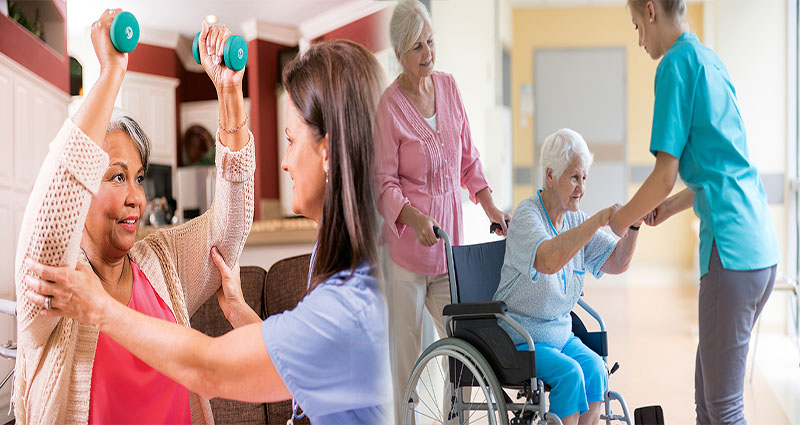Parkinson’s disease is a debilitating disorder that affects over five million people in the United States alone. Parkinson’s disease can be debilitating not only physically but emotionally as well. The symptoms of Parkinson’s disease vary from person to person. Nursing rehabilitation is meant to help people with neurological conditions regain their mobility, strength, and independence. There are several types of nursing rehabilitation therapy including occupational therapy, speech therapy and physical therapy. Physical challenges faced by people with Parkinson’s include tremors and stiffness in their limbs, as well as difficulty walking or balancing themselves.
Parkinson’s disease is a debilitating disorder that affects over five million people in the United States alone.
Parkinson’s disease is a degenerative disorder that affects the nervous system. The exact cause of Parkinson’s disease is unknown, but genetics and environmental factors are believed to play roles in its development.
Symptoms include tremors (jerky movements), slow movements, muscle stiffness or weakness and problems with balance. These symptoms can vary greatly from person to person depending on how severe they are and where they occur within the body. Symptoms may worsen over time as the disease progresses; eventually leading to death if left untreated or uncontrolled
Parkinson’s disease can be debilitating not only physically but emotionally as well.
Parkinson’s disease can be debilitating not only physically but emotionally as well. The loss of independence, self-esteem and control over your own body can cause depression, anxiety and sadness.
The symptoms of Parkinson’s disease vary from person to person.
Parkinson’s disease is a progressive neurological disorder that affects movement. The symptoms can vary from person to person, but they may include tremors, rigidity and slowness of movement. Other symptoms can include problems with balance and coordination, depression and anxiety as well as sleep disorders.
The severity of Parkinson’s disease symptoms varies from person to person; some people may only experience mild stiffness in their arms or legs while others might have trouble walking without assistance due to severe stiffness throughout their body (called ‘parkinsonism’).
Nursing rehabilitation is meant to help people with neurological conditions regain their mobility, strength, and independence.
Nursing rehabilitation is meant to help people with neurological conditions regain their mobility, strength, and independence.
Nursing rehabilitation is not just for people with Parkinson’s disease; it can be used for other neurological conditions as well.
There are several types of nursing rehabilitation therapy including occupational therapy, speech therapy and physical therapy.
There are several types of nursing rehabilitation therapy including occupational therapy, speech therapy and physical therapy.
Occupational therapists help people with Parkinson’s disease develop skills that improve their ability to perform daily tasks such as dressing themselves or preparing meals. This can include training in how to use adaptive equipment such as grab bars or electric scissors so that patients can continue doing activities they enjoy despite the effects of their condition. Occupational therapists also work with caregivers to determine the best way for them to assist the patient at home or in other settings (e.g., a friend’s house).
Physical therapists help people with Parkinson’s disease improve mobility by helping them learn exercises that strengthen muscles throughout their bodies without overworking any one area too much by focusing on balance exercises instead of muscle building exercises alone – this helps prevent falls caused by lack of coordination between legs during walking motions.”
Physical challenges faced by people with Parkinson’s include tremors and stiffness in their limbs, as well as difficulty walking or balancing themselves.
Physical challenges faced by people with Parkinson’s include tremors and stiffness in their limbs, as well as difficulty walking or balancing themselves. Tremors are involuntary movements that can be seen in the hands, arms, legs and face. Stiffness is a loss of muscle flexibility that makes it difficult for you to move your body parts normally. If you have trouble walking or balancing yourself because of these symptoms, it increases your risk for falls and injuries.
There are many types of rehabilitation available for people with Parkinson’s disease
Nursing rehabilitation is meant to help people with neurological conditions regain their mobility, strength, and independence. The types of nursing rehabilitation include physical therapy (PT), occupational therapy (OT) and speech-language pathology services.
The goal of PT is to help people improve their ability to move around safely without falling. It may also focus on helping them maintain strength in their legs so they can walk longer distances or climb stairs without becoming fatigued as quickly as before treatment started. OT helps people learn ways of doing everyday tasks that will make them easier for those affected by Parkinson’s disease–such as eating properly with spearing utensils instead of holding onto them tightly because they feel like they’re going to drop something if they don’t hold onto something else at the same time; using special tools for dressing wounds; using adaptive equipment like walkers when needed instead of relying solely upon crutches which could cause further injury due to overuse injuries such as stress fractures in feet/ankles etc… Speech-language pathologists provide services such as speech therapy sessions where patients learn how best communicate effectively despite having difficulty speaking clearly due either partially due lack control over facial muscles affecting pronunciation while speaking loudly enough volume level loud enough so listeners could hear clearly what being said during conversation between two parties involved
This is a chronic condition that will likely require ongoing care, but there are many things you can do to help yourself with Parkinson’s disease. If you’re having trouble with mobility or balance, consider using a walker or wheelchair when necessary. Your doctor may also prescribe medications such as L-dopa or dopamine agonists which have been shown effective in managing symptoms like tremors and stiffness in limbs as well as improving mobility for people with Parkinson’s disease.











